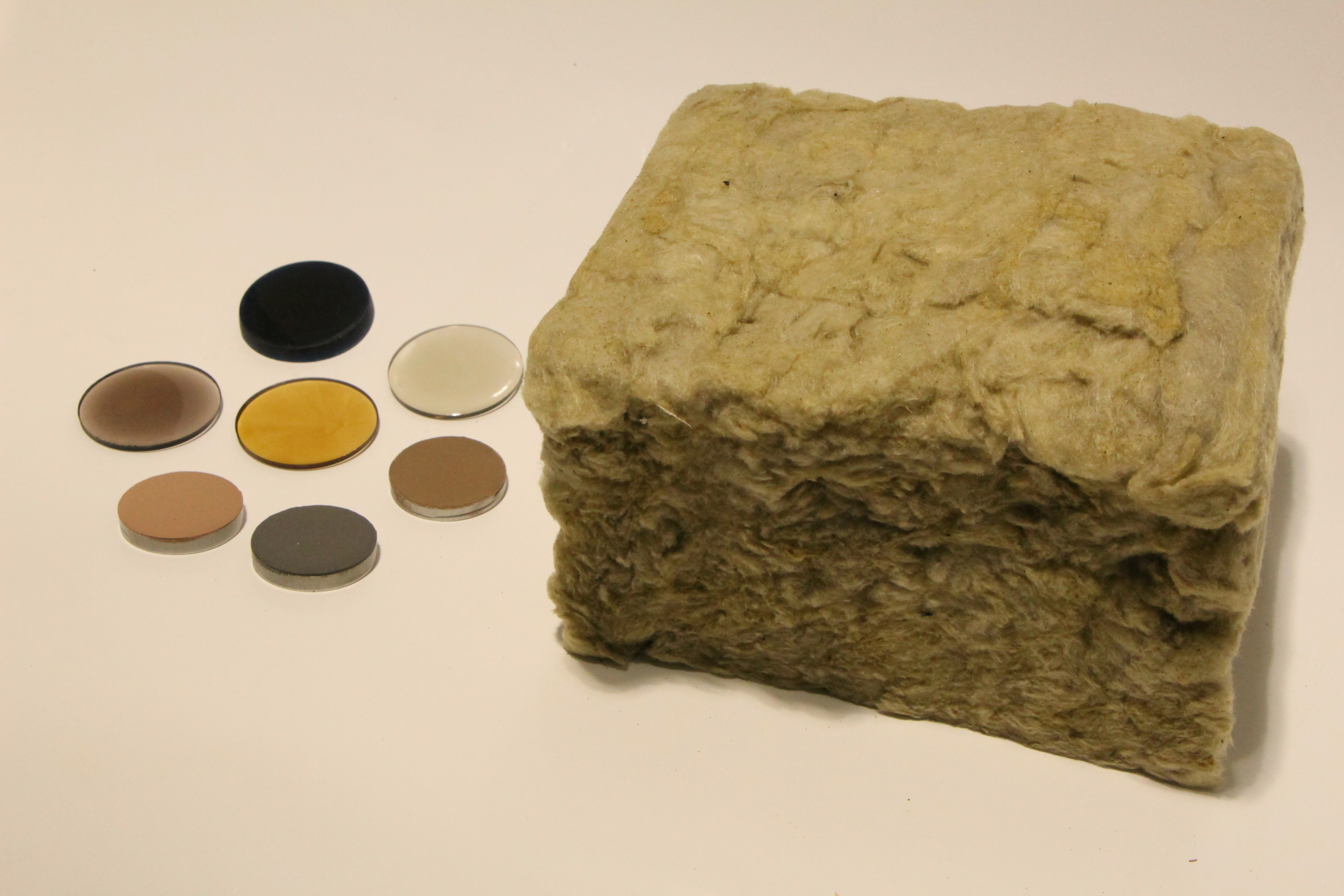
Mineral wool, melting tablets and pellets for X-ray fluorescence analysis (XRF).
Source: BAM
In Germany, around 20 million tons of mineral wool are used annually as insulation material for roofs and facades as well as for thermal and acoustic insulation or as fire protection products. An important aspect in the development of a comprehensive concept for optimizing the life cycle of artificial mineral fiber insulation materials is the recycling of these insulation materials. To date, mineral wool has mainly been recycled by the manufacturer as offcuts or, in rare cases, by returning it to the manufacturing process on construction sites. After demolition, however, mineral wool is disposed of in landfills and is therefore no longer available as a recyclable raw material. To obtain a recycled product that meets the manufacturer's requirements, it is important to distinguish between the two most common types of mineral wool, glass wool and rock wool. Mixing of the two products must be avoided, as they cannot be processed in the recycling process of the other product due to their different chemical composition and melting temperatures.
Based on VDI-guideline 3492, it is possible to determine whether glass wool or rock wool is involved using the mass fractions of eight oxides (SiO2, Al2O3, CaO, MgO, K2O, Na2O, Fe2O3 and TiO2). In this study, 141 mostly unknown mineral wool samples collected in Germany were analysed using X-ray fluorescence analysis. This established analytical method enables the quantitative determination of elements ranging from boron to uranium. Using multivariate visualisation, extreme samples and potential outliers can be identified. In addition to the determination of the material, an oxide-based differentiation into ‘old’ and ‘new’ rock wools is possible, i.e. materials that were produced before or after 2000. Fibre dusts from mineral wool were classified as suspected carcinogens in 1970. Therefore, according to TRGS 905, since 2000 only mineral fibres that are considered ‘harmless’ according to defined criteria may be marketed in Germany. The composition of ‘new’ rock wool is characterized above all by higher Al2O3 and lower SiO2 contents, whereby the classification is often not clear due to the limit values specified in VDI guideline 3492. Multivariate methods can also support the classification of rock wool when dealing with this issue. This publication comprises the most comprehensive collection of oxide contents of mineral wool to date and represents a reference work for future users and applications.
How reliable is the X-ray fluorescence-based differentiation between glass wool and rock wool and the age classification of rock wool?
Andrea Paul, Zoe Liestmann, Steffen Zaenker, Kristin Vogel, Tanja Broszies, Markus Ostermann
X-Ray Spectrometry, 2024


